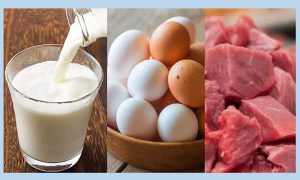Protein on a Budget: Dhaka’s Tk 50k Dilemma

Nutritional Intake Among Low-Income Households in Dhaka
In Dhaka, households earning under Tk 50,000 per month—classified as low-income—face significant challenges in meeting their nutritional needs, particularly concerning protein-rich foods like fish, milk, and other animal-based products. Economic constraints, rising food prices, and inflation have compelled these families to adjust their dietary habits, often leading to reduced consumption of essential nutrients.
Fish Consumption
Fish is a primary source of animal protein in Bangladesh, contributing approximately 60–63% of the nation’s animal protein intake . Among low-income households in Dhaka, fish consumption is influenced by affordability and availability. A study focusing on low-income populations revealed that these households typically consume fish between 4 to 17 days per month. They often opt for more affordable, farmed species such as Rui (Labeo rohita), Tilapia, Pangas, and Koi . Despite awareness of fish’s nutritional value, 89% of respondents indicated that financial constraints prevent them from meeting their daily fish protein requirements.

Milk and Dairy Consumption
Milk and dairy products are less frequently consumed among Dhaka’s low-income families due to cost barriers. While specific data on milk consumption in Dhaka is limited, national trends indicate that dairy intake is lower in rural areas, with an average of 30 grams per capita per day . In urban low-income settings, such as Dhaka’s slums, milk is often considered a luxury item, leading to minimal consumption.
Other Protein Sources
Low-income households in Dhaka primarily rely on plant-based proteins, such as lentils, due to their affordability. Consumption of animal proteins like meat and eggs is limited and often reserved for special occasions or when the budget allows . This dietary pattern results in protein intake levels that fall below recommended standards, particularly affecting children in slum areas. Studies have shown that children in these communities consume approximately 16.6 grams of protein daily, significantly lower than the 26 grams reported 15 years prior .

Food Expenditure Patterns
Low-income families in Dhaka allocate a substantial portion of their income to food. On average, these households spend about 42% of their monthly income on food . However, during financial crises or emergencies, daily food expenditures can drop to as low as Tk 30, further compromising dietary diversity and nutritional adequacy .
Health Implications
The limited consumption of protein-rich foods among low-income households has significant health implications. Children in these communities are particularly vulnerable, with many experiencing undernutrition, stunting, and other health issues related to inadequate protein intake . The reliance on carbohydrate-rich staples like rice, coupled with insufficient protein and micronutrient intake, exacerbates these health challenges.
Conclusion
Low-income households in Dhaka face considerable obstacles in accessing adequate protein sources, primarily due to financial constraints. Their diets are heavily reliant on affordable staples, with limited inclusion of fish, milk, and other animal-based proteins. This dietary pattern contributes to nutritional deficiencies, particularly among children, underscoring the need for targeted interventions to improve food security and nutritional outcomes in these communities.






















